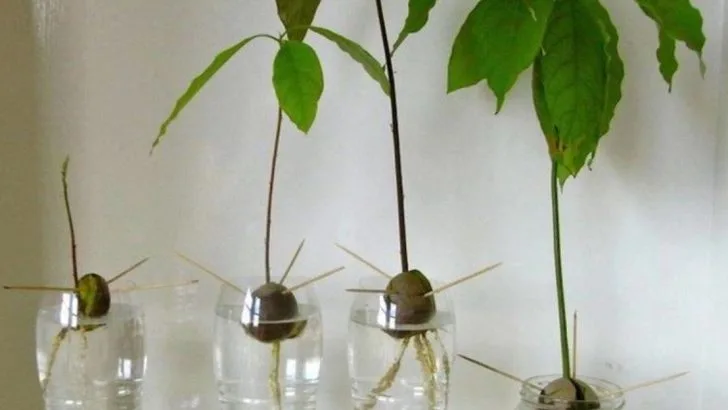Did you know that many kitchen scraps can be turned into thriving new plants? Instead of tossing vegetable ends, fruit peels, or herb stems, you can give them a second life and grow fresh greens right at home. It’s a fun, sustainable way to reduce waste and boost your indoor or outdoor garden.
From regrowing green onions in water to sprouting potatoes from eyes, kitchen scraps offer endless possibilities for beginner gardeners. All it takes is a little patience and the right techniques to start your own mini garden from what you’d normally throw away.
In this article, learn how to use kitchen scraps to grow new plants—step-by-step tips that anyone can follow to turn waste into green wonders.
Avocado Pits

Start your avocado journey with a pit! Clean the seed thoroughly, then insert toothpicks around its circumference to balance it over a glass of water. Ensure the bottom half is submerged. Within weeks, roots and a stem will emerge, offering a glimpse of the tree-to-be. A little patience and sunlight go a long way in nurturing this exotic plant. Did you know? Avocados were once called ‘alligator pears’ due to their bumpy skin!
Green Onion Stubs

Green onions are the gift that keeps on giving. Place the unused white ends with roots in a jar of water and watch them regrow in mere days. Change the water regularly to keep them fresh. Their rapid growth is perfect for those eager to see results quickly. Fun fact: Green onions have been used in Asian cuisine for over a thousand years!
Potato Eyes
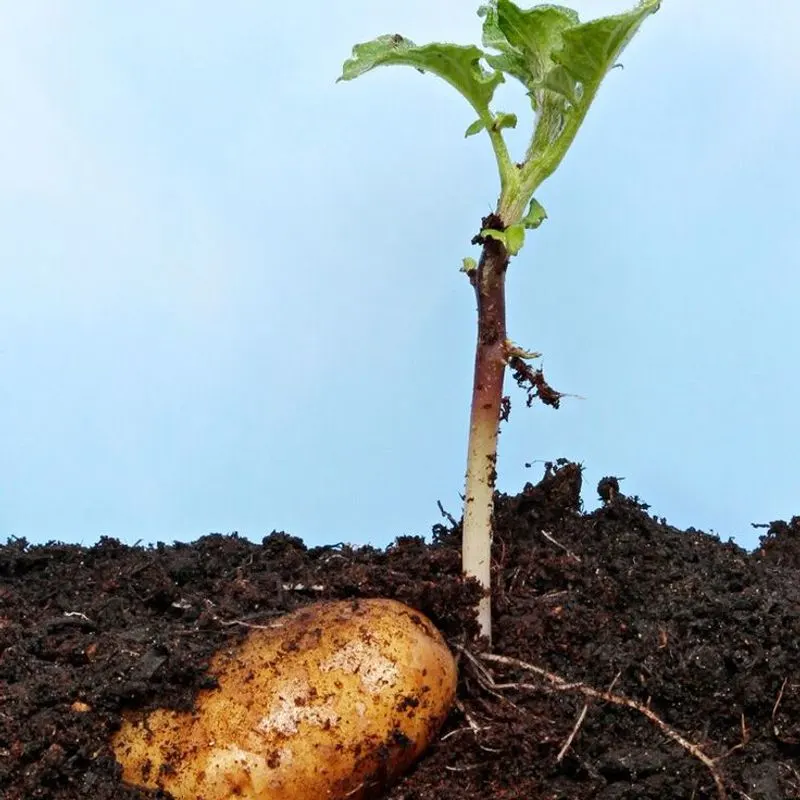
Potatoes are masterful regenerators. Cut a potato into chunks, ensuring each piece has at least one ‘eye’. Plant them in soil with eyes facing up. Soon, sprouts will appear, promising a future bounty. This method recycles old potatoes that might otherwise end up in the compost. Historically, potatoes have been a staple since introduced to Europe from the Americas in the 16th century.
Lettuce Stumps

Imagine having endless lettuce! Place the leftover stump in a shallow bowl with a bit of water. New leaves will sprout from the center soon after. This is a wonderful way to enjoy fresh greens while reducing waste. Romans were among the first to cultivate lettuce, appreciating its refreshing taste!
Carrot Tops

Carrot tops are not just for the compost bin. Place them in a shallow dish of water and watch green tendrils reach for the sky! With time, these will grow into leafy greens perfect for garnishing dishes. Interestingly, carrot greens were traditionally used as medicinal herbs in ancient times.
Celery Bases
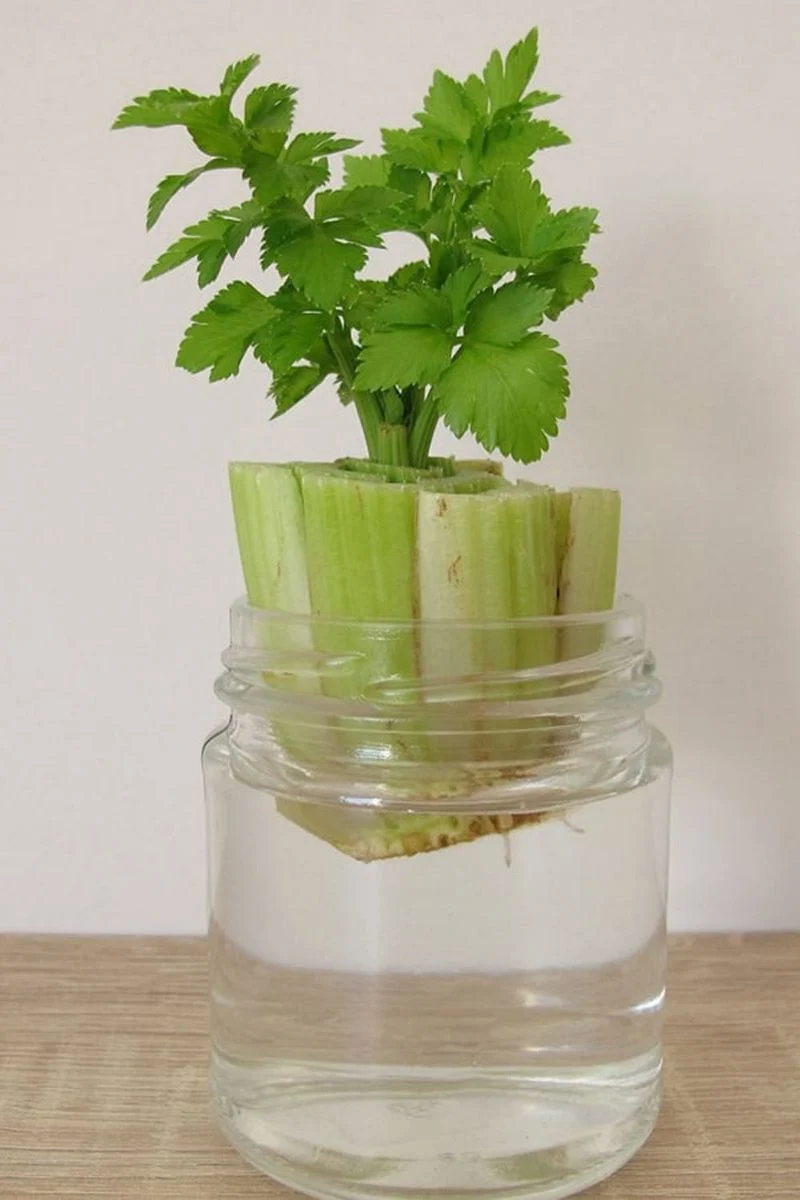
A celery base can have a second life. Nestle it into a shallow bowl with water. Within days, small shoots will spring forth, a testament to nature’s resilience. Perfect for adding a crunchy freshness to your dishes. Celery, cultivated since the Mediterranean era, was once believed to have medicinal properties.
Ginger Knobs
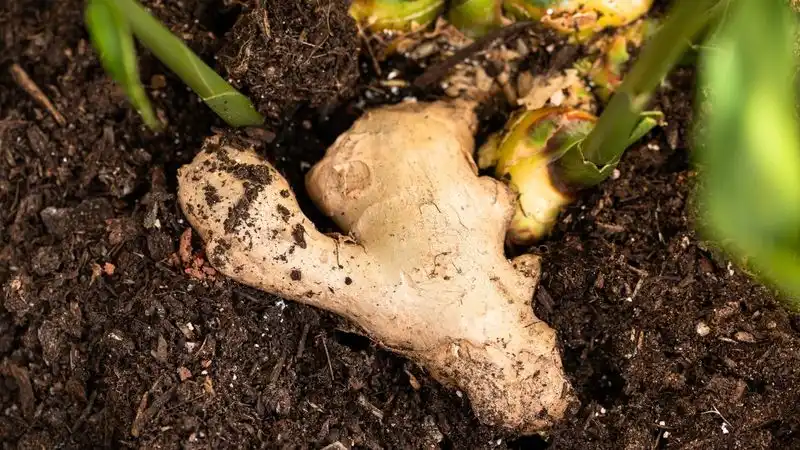
The magic of ginger lies in its rhizomes. Place a piece in soil, ensuring the buds face upwards. Over time, it will sprout, providing fresh ginger for culinary delights. Ginger’s warm, spicy aroma has been cherished across cultures for centuries, especially in Chinese and Indian cooking.
Pineapple Tops
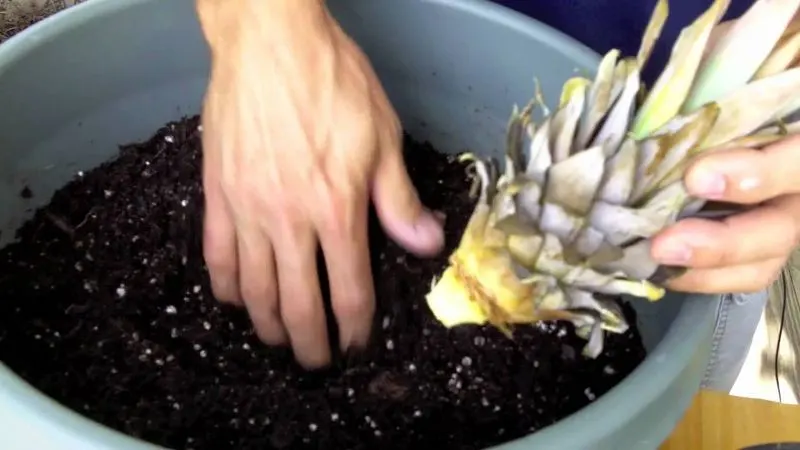
Pineapple tops can create a tropical vibe right at home. Twist off the top and remove some leaves to expose the stem. Plant it in soil and let it bask in sunlight. Over time, a new pineapple plant will emerge. Pineapples were once a symbol of hospitality and wealth in the 17th century!
Mushroom Stems
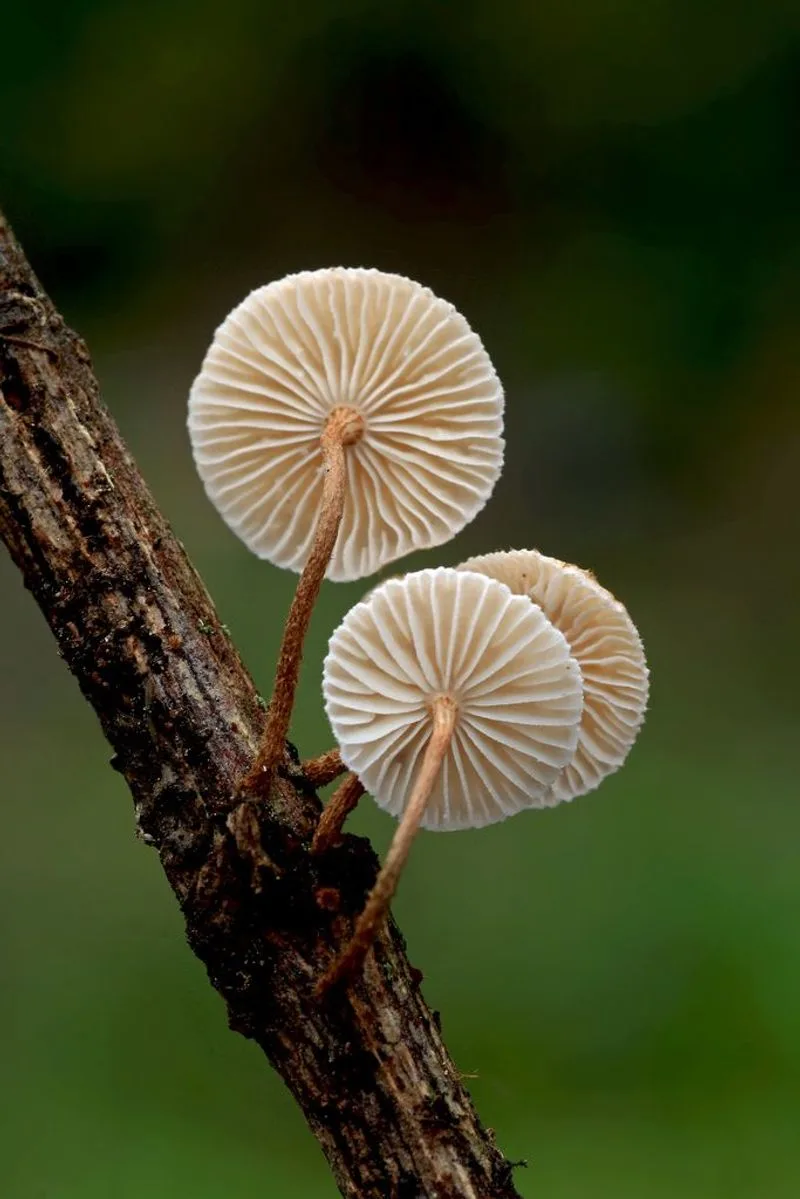
Mushrooms can regrow from stems. Plant them in a mixture of soil and compost. Provide a humid environment, and soon small fungi will appear. This is a unique way to enjoy fresh mushrooms without constant trips to the store. Mushrooms were revered in ancient Egypt, considered food fit for royalty.
Tomato Seeds

Tomatoes can be grown from seeds scooped from a fresh tomato. Dry them, then plant in soil. With regular watering and sunlight, seedlings will appear, promising juicy tomatoes. These versatile fruits have a rich history, from being considered poisonous to becoming a kitchen staple worldwide.

